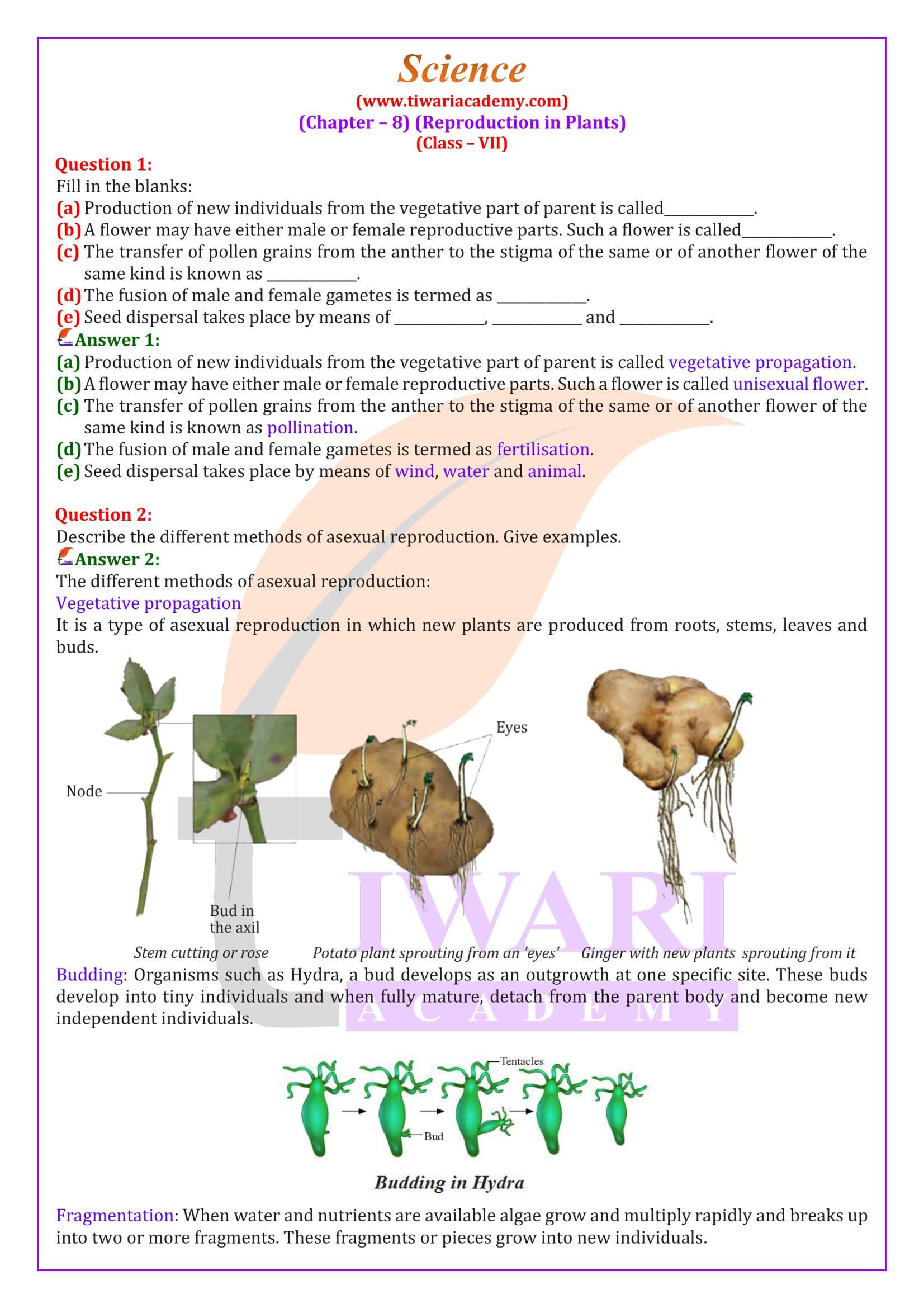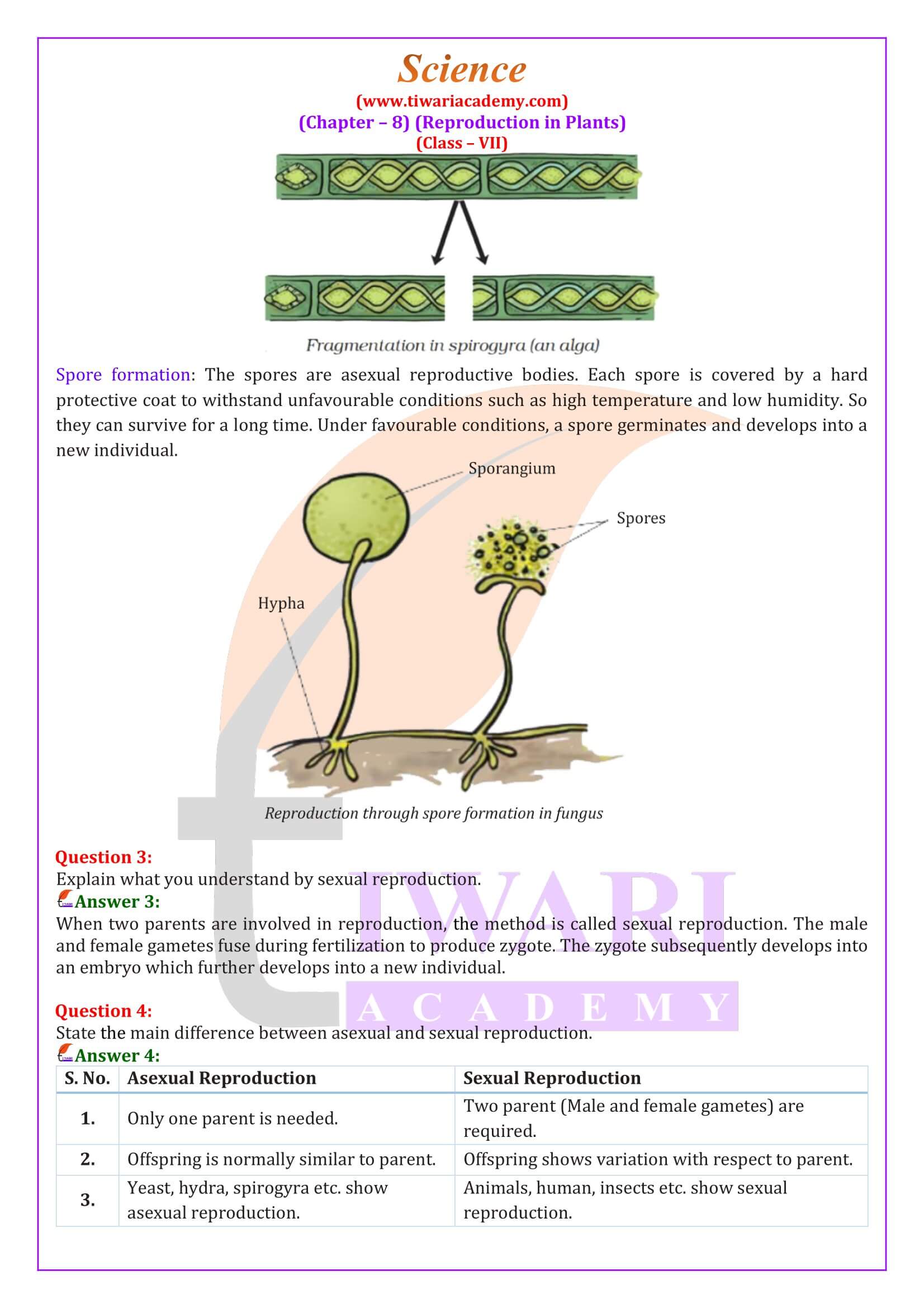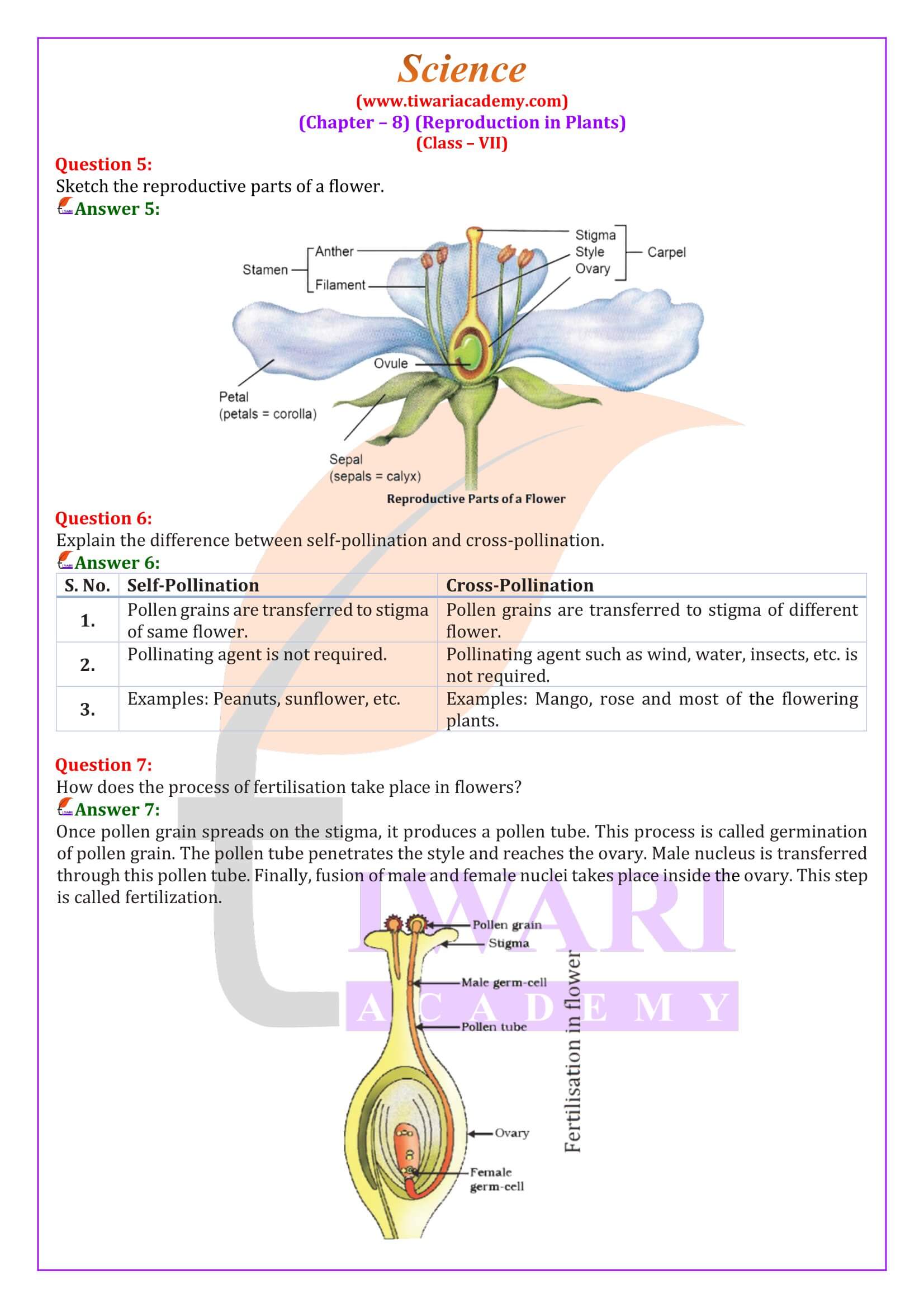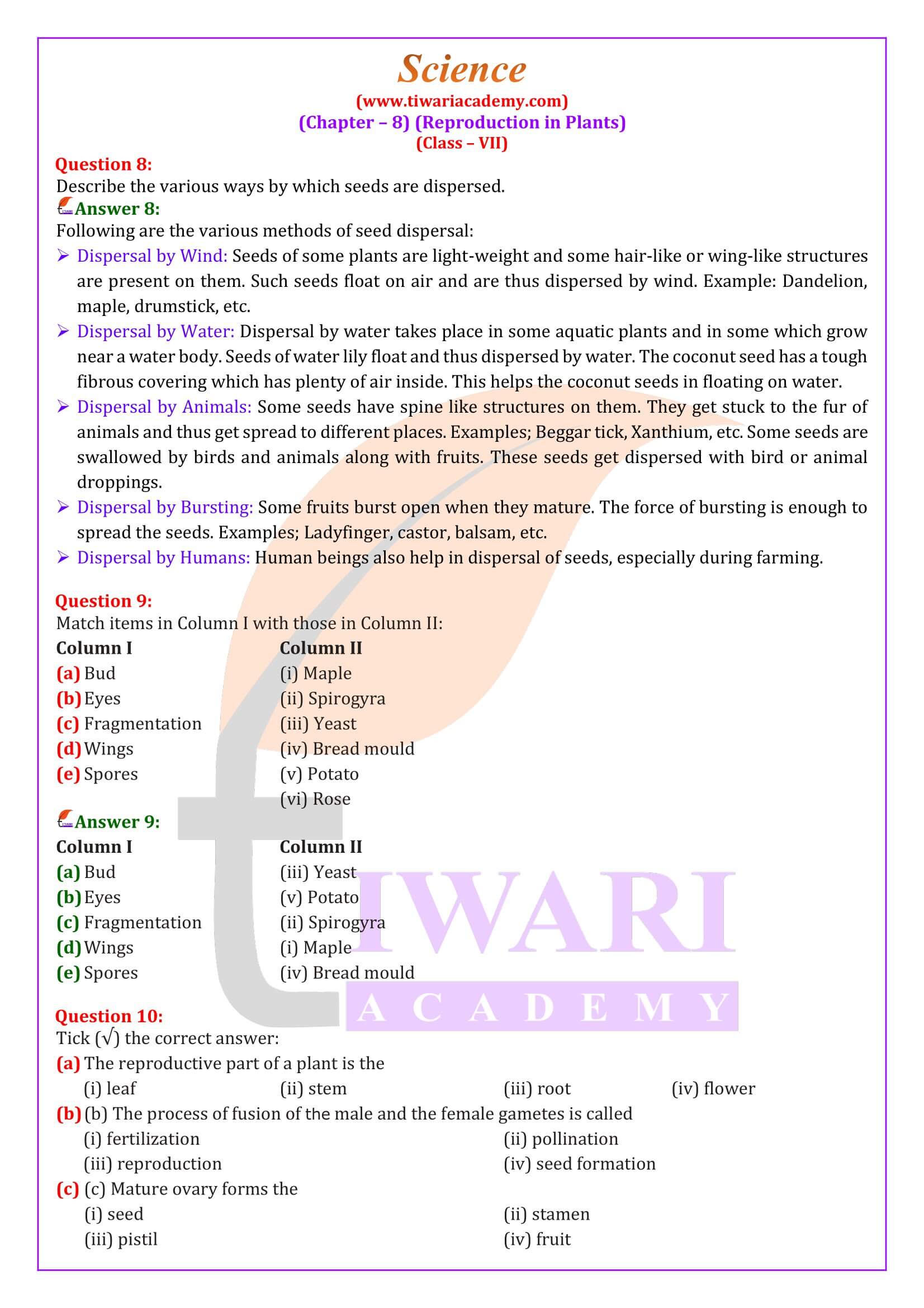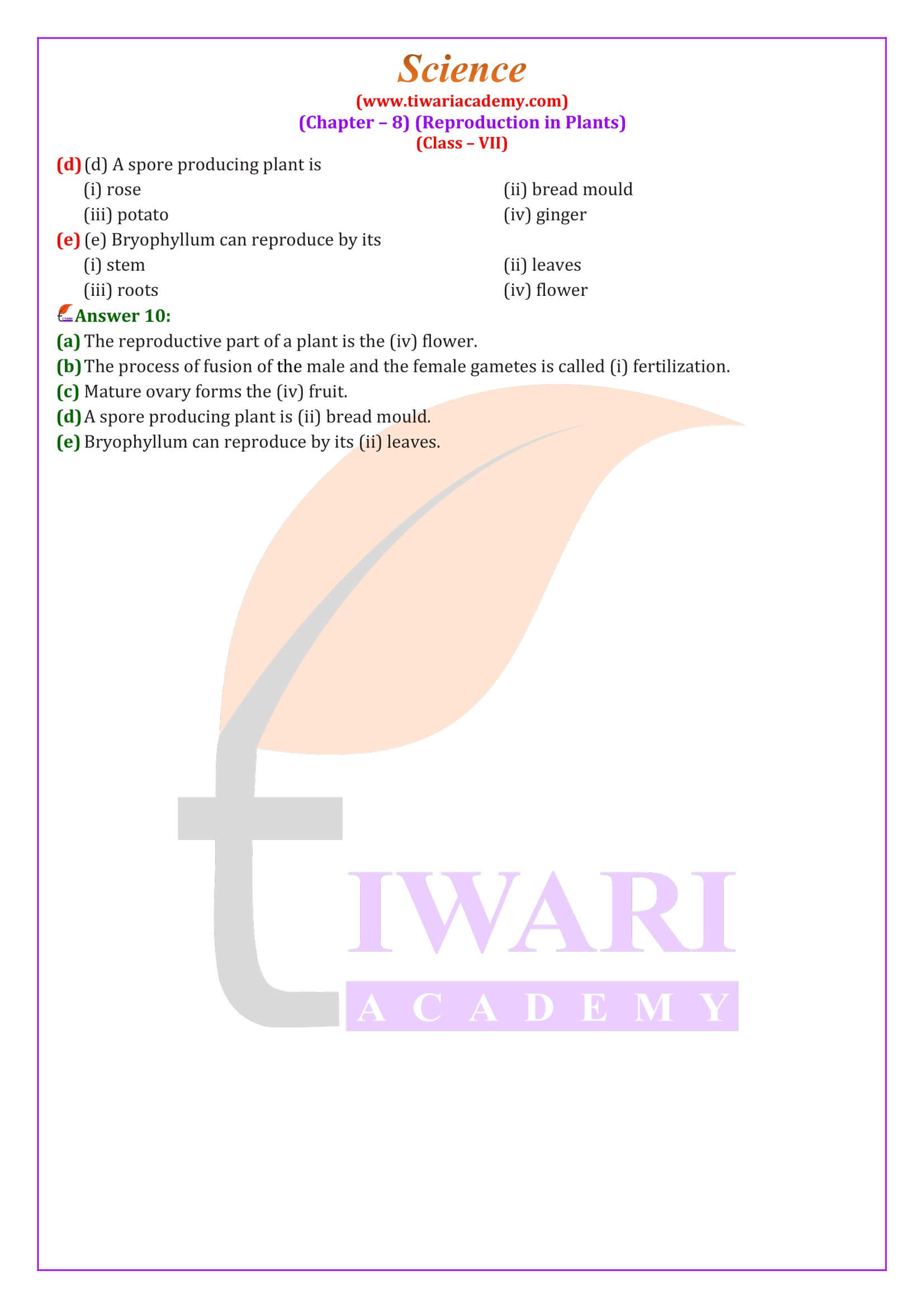Question Wise Class 7 Science Chapter 8 Solutions
Class 7 Science Chapter 8 NCERT Answers
Class 7 Science Chapter 8 in Hindi Medium
Class 7 Science Chapter 8 Extra Questions
Class 7 Science Chapter 8 MCQ
Class 7 Science NCERT Book Download
NCERT Solutions for Class 7 Science
NCERT Solutions for Class 7 all Subjects
NCERT Solutions for Class 7 Science Chapter 8 Reproduction in Plants in English Medium and Hindi Medium free PDF file download or view online updated for academic session 2024-25 based on new NCERT Books. The solutions of class 7 Science chapter 8 is modified for on the basis of NCERT books issued for 2024-25 exams.
| Class: 7 | Science |
| Chapter 8: | Reproduction in Plants |
| Content: | MCQ, Solutions and Extra Questions |
| Content Type: | PDF, Videos and Images |
| Session: | 2024-25 |
| Medium: | Hindi and English Medium |
Class 7 Science Chapter 8 NCERT Solutions
Class 7 Science Chapter 8 Answers
CBSE NCERT Solutions for Class 7 Science Chapter 8 Reproduction in Plants is given below to use online-offline in Hindi Medium or English Medium. Video related to this chapter with key words and explanation is also given free. Visit to NCERT Solutions Apps main page to download apps for academic session 2024-25..
Important Questions on 7th Science Chapter 8 for Practice
1. Pollination refers to the
(a) transfer of pollen from anther to ovary.
(b) transfer of male gametes from anther to stigma.
(c) transfer of pollen from anther to stigma.
(d) transfer of pollen from anther to ovule.
2. Which of the following parts of a plant take part in sexual reproduction?
(i) Flower (ii) Seed (iii) Fruit (iv) Branch
Choose the correct answer from below.
(a) (i) and (ii)
(b) (i), (ii) and (iii)
(c) (iii) and (iv)
(d) (ii), (iii) and (iv)
3. The ovaries of different flowers may contain
(a) only one ovule
(b) many ovules
(c) one to many ovules
(d) only two ovules
4. Lila observed that a pond with clear water was covered up with a green algae within a week. By which method of reproduction did the algae spread so rapidly?
(a) Budding
(b) Sexual reproduction
(c) Fragmentation
(d) Pollination
5. The ‘eye’ of the potato plant is what
(a) the root is to any plant.
(b) the bud is to a flower.
(c) the bud is to Bryophyllum leaf.
(d) the anther is to stamen.
6. Which of the following statements is/are true for sexual reproduction in plants?
(i) Plants are obtained from seeds. (ii) Two plants are always essential.
(iii) Fertilisation can occur only after pollination. (iv) Only insects are agents of pollination.
Choose from the options given below.
(a) (i) and (iii)
(b) (i) only
(c) (ii) and (iii)
(d) (i) and (iv)
7. Seeds of drumstick and maple are carried to long distances by wind because they possess
(a) winged seeds
(b) large and hairy seeds
(c) long and ridged fruits
(d) spiny seeds
8. When you keep food items like bread and fruits outside for a long time especially during the rainy season, you will observe a cottony growth on them.
(a) What is this growth called? (b) How does the growth take place?
Answers of Important Questions
1 (c)
2 (b)
3 (c)
4 (c)
5 (c)
6 (a)
7 (a)
8. (a) It is bread mould, a fungus. (b) They develop from spores.
Important NCERT Questions Class 7 Science Chapter 8
Describe the different methods of asexual reproduction. Give examples.
The different methods of asexual reproduction: Vegetative propagation It is a type of asexual reproduction in which new plants are produced from roots, stems, leaves and buds. Budding Organisms such as Hydra, a bud develops as an outgrowth at one specific site. These buds develop into tiny individuals and when fully mature, detach from the parent body and become new independent individuals. Fragmentation When water and nutrients are available algae grow and multiply rapidly and breaks up into two or more fragments. These fragments or pieces grow into new individuals. Spore formation The spores are asexual reproductive bodies. Each spore is covered by a hard protective coat to withstand unfavourable conditions such as high temperature and low humidity. So they can survive for a long time. Under favourable conditions, a spore germinates and develops into a new individual.
Fill in the blank: Production of new individuals from the vegetative part of parent is called_____________.
Production of new individuals from the vegetative part of parent is called vegetative propagation.
Explain what you understand by sexual reproduction.
When two parents are involved in reproduction, the method is called sexual reproduction. The male and female gametes fuse during fertilization to produce zygote. The zygote subsequently develops into an embryo which further develops into a new individual.
How does the process of fertilisation take place in flowers?
Once pollen grain spreads on the stigma, it produces a pollen tube. This process is called germination of pollen grain. The pollen tube penetrates the style and reaches the ovary. Male nucleus is transferred through this pollen tube. Finally, fusion of male and female nuclei takes place inside the ovary. This step is called fertilization.
Describe the various ways by which seeds are dispersed.
Following are the various methods of seed dispersal: Dispersal by Wind: Seeds of some plants are light-weight and some hair-like or wing-like structures are present on them. Such seeds float on air and are thus dispersed by wind. Example: Dandelion, maple, drumstick, etc. Dispersal by Water: Dispersal by water takes place in some aquatic plants and in some which grow near a water body. Seeds of water lily float and thus dispersed by water. The coconut seed has a tough fibrous covering which has plenty of air inside. This helps the coconut seeds in floating on water. Dispersal by Animals: Some seeds have spine like structures on them. They get stuck to the fur of animals and thus get spread to different places. Examples; Beggar tick, Xanthium, etc. Some seeds are swallowed by birds and animals along with fruits. These seeds get dispersed with bird or animal droppings. Dispersal by Bursting: Some fruits burst open when they mature. The force of bursting is enough to spread the seeds. Examples; Ladyfinger, castor, balsam, etc. Dispersal by Humans: Human beings also help in dispersal of seeds, especially during farming.
